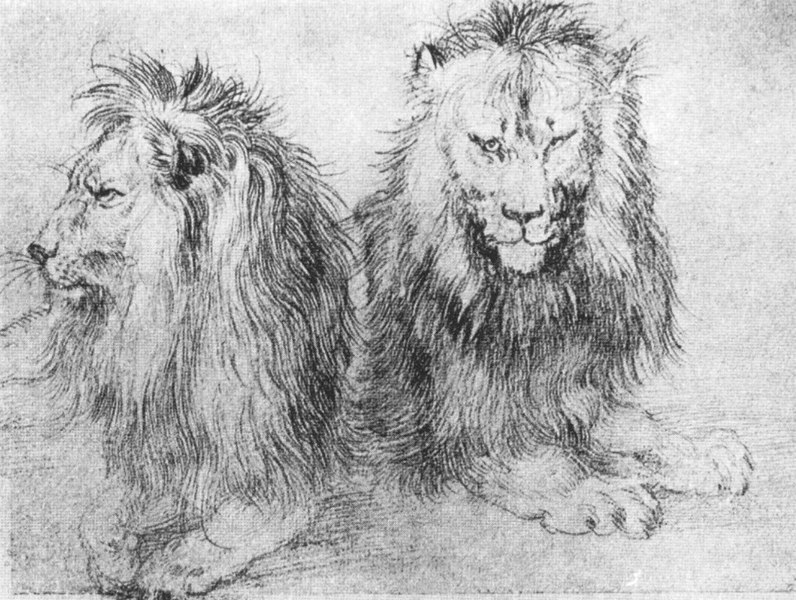The monthly ArtSmart Roundtable brings together some of the best art history-focused travel blogs with a post around a common theme. In honor of April Fool’s Day, April 1, were looking at funny, weird or optical illusions in art. You can find links below to all the group’s examples this month. Enjoy!
With zoos and photography, we all know what exotic animals look like and certainly take that for granted. But what if you lived 500 years ago? If the you are trying to tell a story that required an animal you’ve honestly never seen before, then what do you do? Well most artists just made it up! Whales, leopards, and eagles can all look way off.
I’m always amazed to see representations of lions. Between St. Mark the evangelist’s symbol, Daniel in the den and St. Jerome befriending a lion, you can see lions quite frequently. Having been decimated in Europe and North Africa by the Romans for sports, there were very few living lions for artist to observe in most parts of Europe. As a result they tend to look like dogs, bears and even bulls with which locals were more familiar.

An actual African lion at the Pittsburgh zoo (Photo: Wikimedia)
Flemish master Rogier van der Weyden (1400-1464) had a staggering skill for realistic portraiture. St. Jerome and all his wrinkles are softly rendered below in “Saint Jerome and the Lion”, but the lion itself is nothing like a real animal. In fact, the lion has such human eyes, nose and hair style that this almost looks like a person in a lion costume.
In the illuminated manuscript below, we see that lions can look like a bear or a dog too. The symbol of the St. Mark is now the evangelist’s best friend!
Even a simple decorative lion can be poorly drawn. In this 18th century Delft Charger that recently sold at auction, the “lion” looks like a meaty sheep with a beard.
I wish I could find a picture of it, but the ceiling of the Salzburg Cathedral has a lion that looks just like a bull! Compared to the bull pictured with St. Luke, St. Mark’s “lion” really is just a cow with a mane. It makes sense. Austrians definitely knew what bulls looks like but had only a faint understanding of lions and so they adapted something they already could paint.
As the city of St. Mark and an important trading center, Venice had both a duty to depict lions with some accuracy and the ability to get specimens or quality drawings from others. You’d think Venice would have excellent lions then, but not quite.
Not every lion in European art is so awkward looking. Some of best Renaissance drawings of lions came from in life sketches. While unfinished, Leonardo da Vinci’s St. Jerome in the Wilderness accurately renders the haunches and repose of a living lion. Durer’s sketches were taken from an animal in a royal menagerie.

Leonardo da Vinci – “St Jerome in the Wilderness” c. 1480, Vatican Museums
There are obviously stylized lions in the art of Japan, Assyria, Greece and other cultures that don’t look natural at all but have there own beauty. What I’ve tried to point out here are places where the artist was trying for a realistic representation but created something entirely unique for lack of a living model. Keep you eyes open for oddly drawn lions next time you travel!
So have you seen any weird looking lions in your travels? (Or perhaps some dogs with fluffy manes?)
For the rest of the April ArtSmart Roundtable, see:
- Erin of A Sense of Place – Medieval Monks Had a Sense of Humor
- Murissa of The Wanderfull Traveler – Artist as Comedian in Vicenza
- Jeff Titelius of Eurotravelogue – The Funny Faces of Mannekin Pis
And don’t forget to “like” our group on Facebook for art & travel news!
Filed under: ArtSmart Roundtable Tagged: animals, art, art history, drawing, history, humor, lions, nature, travel


























